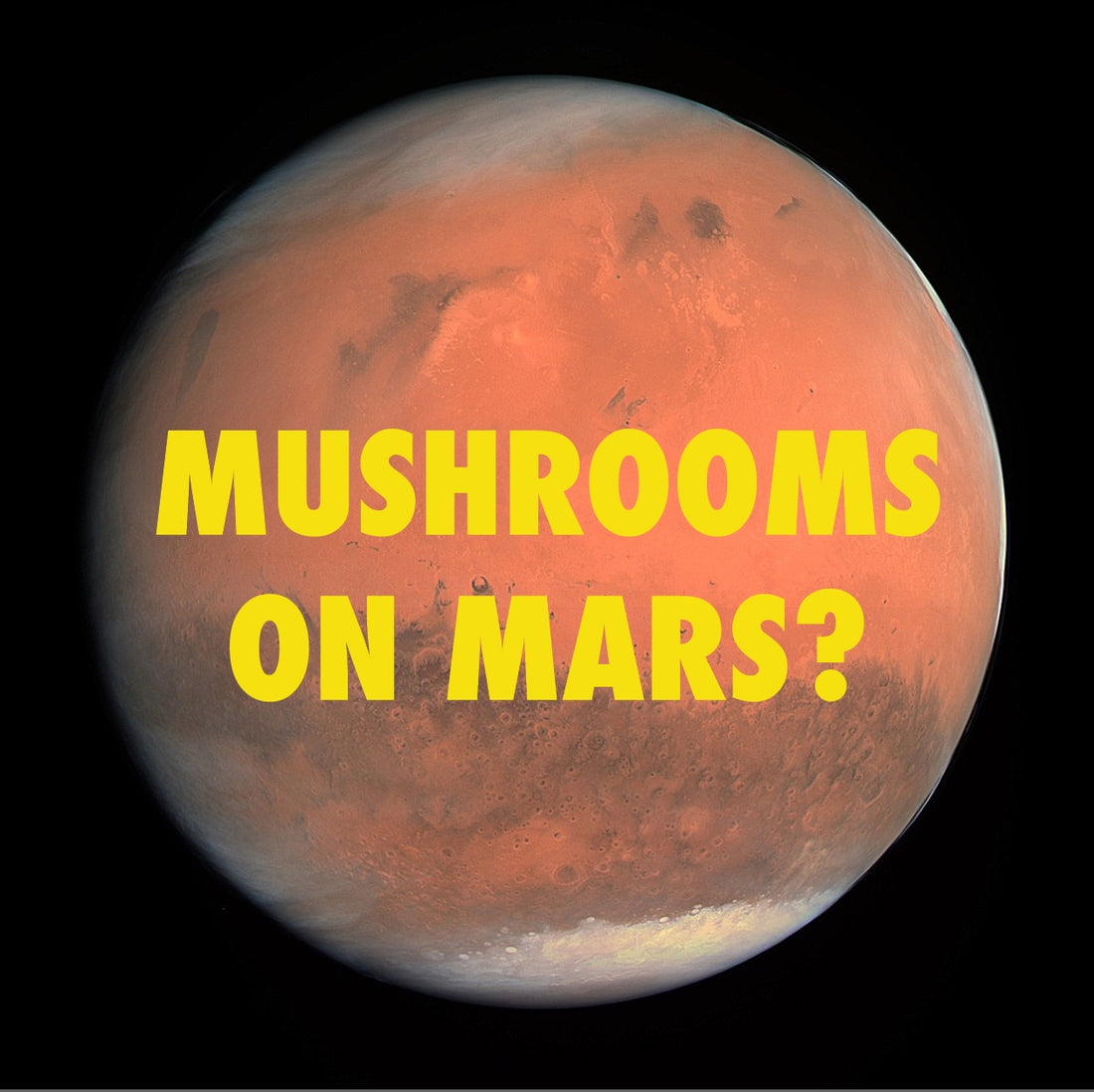
Mushrooms on Mars?
Share
Mushrooms on Mars? Say more!
No one ever really expected to find life on Mars, let alone fungi. That was until one week ago.
Last week, several headlines far and wide raved about the alleged “discovery” of fungi on mars despite controversial views of the claims validity. So much so that even some posts on the topic were flagged as part of Facebook’s efforts to combat false news and misinformation.
Fungi thrive in radiation intense environments. That’s a fact. However, as the dust from the inital hype of the paper on the martian mushrooms has settled, other scientist have gotten a chance to review it and voice their opinion. Today’s Fungi Fact Friday is dedicated to giving some of their thoughts a platform in addition to reviewing the actual claims from the original publication.

First, here is a look at the claims in the original paper. We’re attaching pictures too so you can have some context of what the heck they’re talking about!
- "…Photos document that fungus-like Martian specimens emerge from the soil and increase in size, including those resembling puffballs (Basidiomycota)."
- “After obliteration of them by the rover wheels, new sphericals versions appeared, some with stalks, on top of the wheel tracks
- Sequences document that thousands of black arctic "araneiforms" (mycelium like shapes) grow up to 300 meters in the Spring and disappear by Winter; a pattern repeated each Spring and which may represent massive colonies of black fungi, mold, lichens, algae, methanogens and sulfur reducing species.

An example of black araneiforms.
- “Black fungi-bacteria-like specimens also appeared atop the rovers. In a series of photographs over three days, white amorphous specimens within a crevice changed shape and location then disappeared.”
- “White protoplasmic-mycelium-like-tendrils with fruiting-body-like appendages form networks upon and above the surface; or increase in mass as documented by sequential photographs”
 Mushroom-esque finding from the Rover.
Mushroom-esque finding from the Rover.
- “Hundreds of dimpled donut-shaped "mushroom-like" formations approximately 1mm in size are adjacent or attached to these mycelium-like complexes.”
- “Additional sequences document that white amorphous masses beneath rock-shelters increase in mass, number, or disappear and that similar white-fungus-like specimens appeared inside an open rover compartment.

The paper concludes with the researchers acknowledging that “minerals, weathering and unknown geological forces that are unique to Mars” could be causing the changes captured in the images. This caveat is exactly what many critics to the papers claims have speculated as the reasons for the mushroom/fungi-esque growths.
For example, Dr. Edwin Kite, from the department of the geophysical sciences and a planetary geoscientist and Mars expert at the University of Chicago confirmed the geological force theory. “"These features are well understood," he said. "They are abiotic features caused by saltation abrasion (wind erosion). Numerous examples have been inspected by rovers [...] They are not fungi."
“It’s just like if you go to a beach and there are shells. If the wind blows, the sand moves and exposes more shells. But we won’t say the shells are growing there, it’s just that they become visible,” Jonathan Clarke, president of Mars Society Australia stated.
Many in the scientific community have stated there is no credible evidence to suggest that fungi were discovered on Mars with a lot claiming the “Conclusions” should really be called “Conjectures”. It doesn’t help that there is some apparent controversy with some of the authors previous work. Most notably, the lead researcher, Rhawn Joseph, has been challenged over his prior planetary research as well. One paper he published related to "life on Venus" was later retracted by the journal Astrophysics and Space Science.
No one is rooting to find fungi on mars more than us. However, this latest hype appears to be just that; hype. Even though the Mars soil is toxic and the surface is bathed in deadly radiation, that doesn’t necessary nullify the potential for fungi to grow there. Fungi actually absorb and eat radiation as a food source as we have seen with some fungi thriving near the Chernobyl nuclear power plant site since as soon as 1991, 5 years after the nuclear reactor exploded.
However, if the abundance of radiation may not be the reason for the lack of life on Mars, fungi or otherwise, the absence of liquid water likely is. Fungi needs water to grow and despite our best efforts, we still have not been able to find any water on the red planet. Not all hope is lost though! Scientist believe it hasn’t disappeared but has only retreated into the crust, a theory which keeps us very hopeful for finding our martian fungi friends sometime soon!
That's it for today's FFF. Tell a friend tonight over mai tais and enjoy this here FFF 15% off :)
